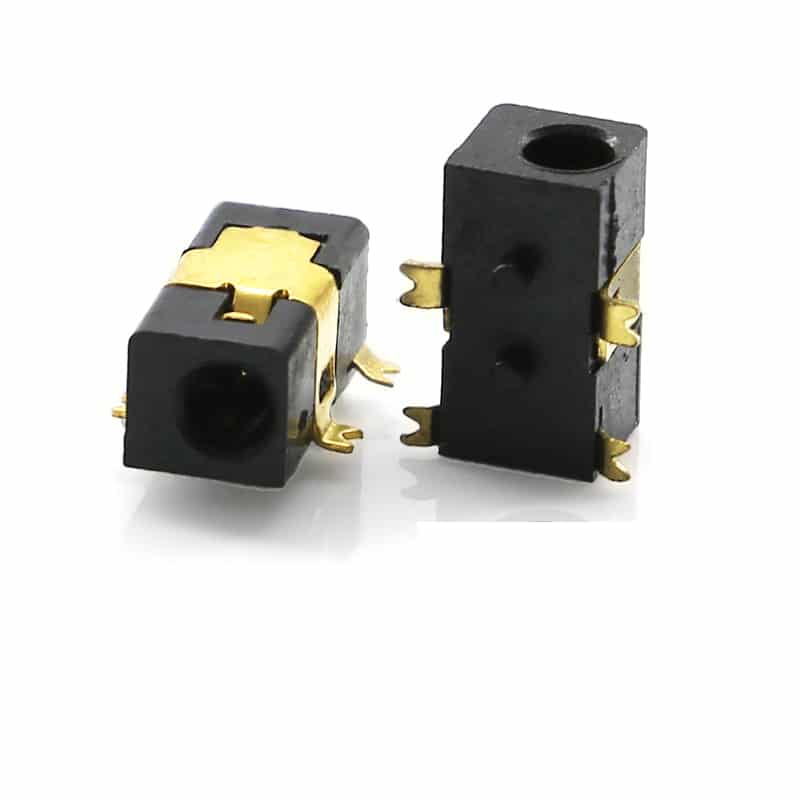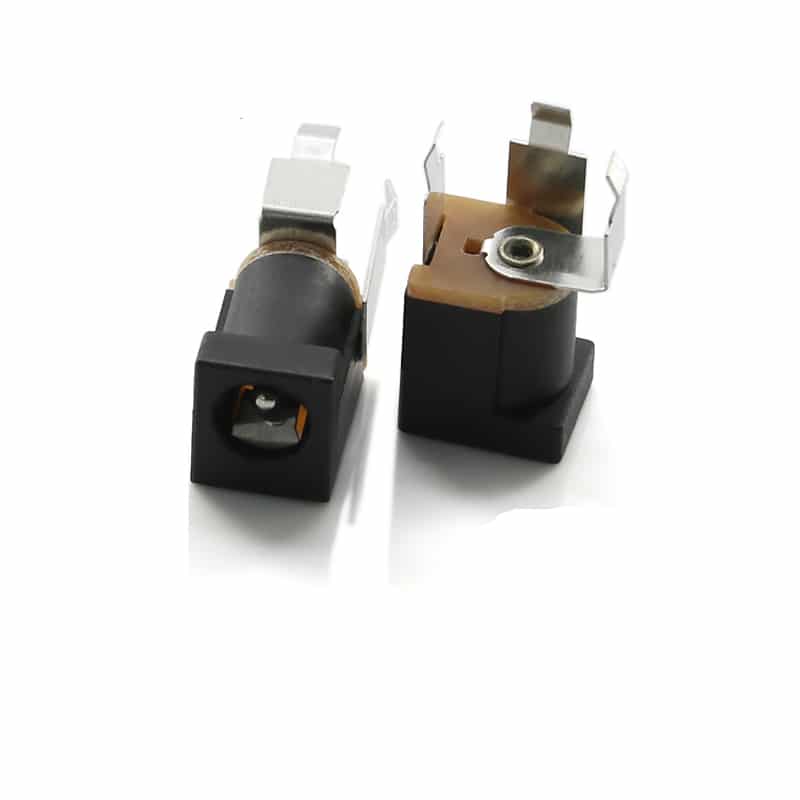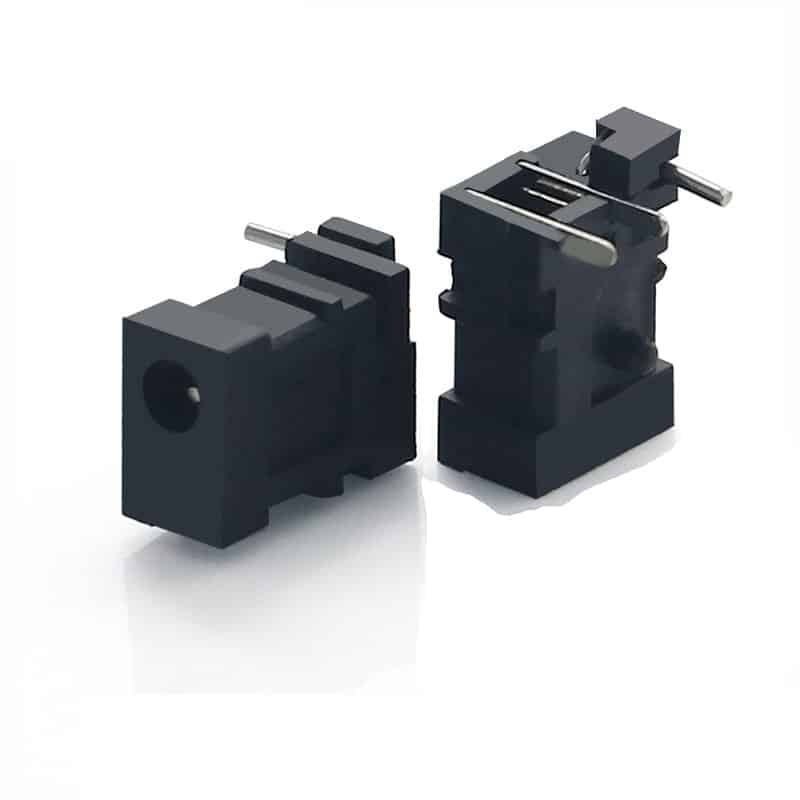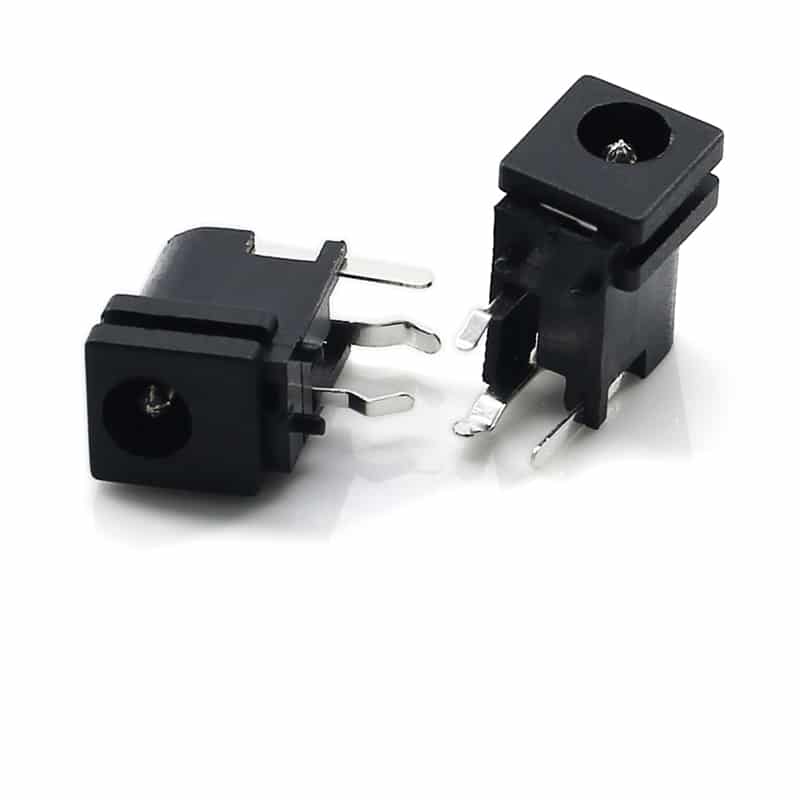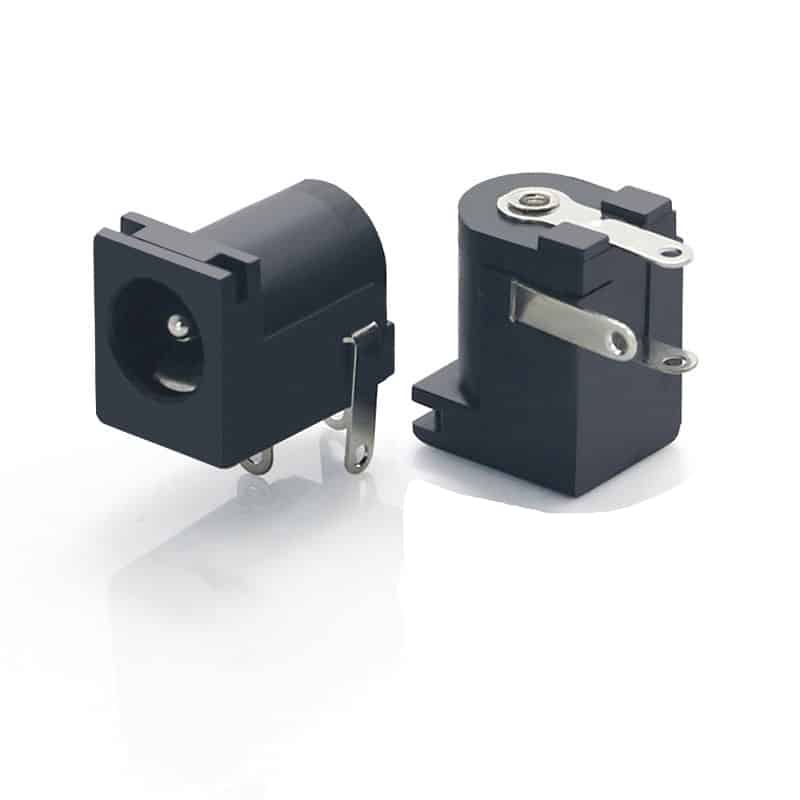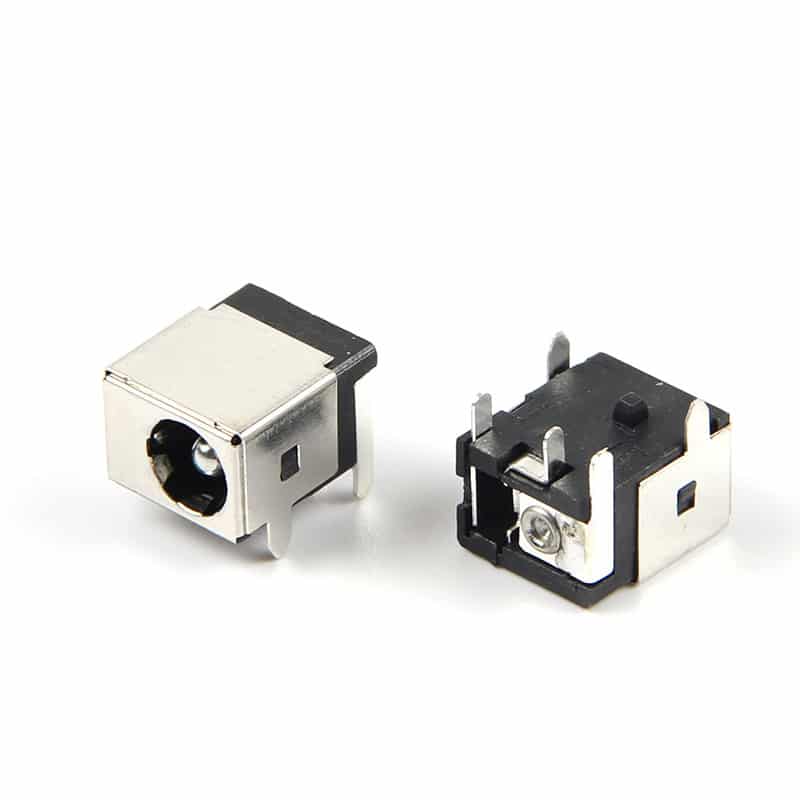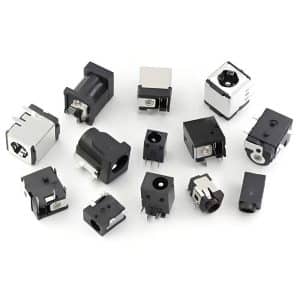Table of Contents
Walk through any electronics store, peek behind any desk, or open up any tinkerer’s parts bin, and you’ll find them: DC barrel jack connectors. These simple, cylindrical connectors are the primary way millions of devices—from internet routers and guitar pedals to LED lights and older laptops—receive their power.
Despite the modern dominance of USB, the humble DC barrel connector remains a workhorse in the industry. It’s cheap, robust, and capable of handling significant power. However, it also carries a legacy of confusing standards that has frustrated consumers and engineers alike for decades.
What is a DC Barrel Jack Connector?
A DC barrel connector is a type of electrical connector primarily used for supplying Direct Current (DC) power to a device from an external power supply (often called an AC adapter or “wall wart”).
They are technically known as coaxial power connectors because their structure involves two conductors arranged coaxially: one in the center and one surrounding it.
It’s important to distinguish the two parts:
- The Plug (Male): This is the cylindrical part at the end of the power supply cable. It has a hollow metal inner sleeve and a metal outer sleeve, separated by an insulating material.
- The Jack (Female): This is the receptacle mounted on the device itself. It features a pin in the center and a metal barrel on the outside designed to receive the plug. This is what is commonly referred to as the “DC Barrel Jack.”
Anatomy and How They Work
The design is straightforward, which is a key reason for its low cost and high reliability.
1. The Outer Conductor (The Barrel):
When the male plug is inserted, its outer metal sleeve makes contact with the outer barrel of the female jack. This is typically a spring-loaded contact inside the jack to ensure a firm, reliable connection.
2. The Inner Conductor (The Pin/Sleeve):
The center pin inside the female jack fits into the inner sleeve of the male plug.
3. The Insulator:
A layer of insulating material (usually plastic) separates the inner and outer conductors on both the plug and the jack to prevent short circuits.
4. The Switch (The Third Leg):
Many PCB-mounted DC jacks have three terminals instead of just two. The third terminal is a mechanical switch. When no plug is inserted, the center pin contact rests against this third terminal. When a plug is inserted, it physically pushes the center pin contact away, breaking the connection with the third terminal.
- Why is this useful? It allows devices to automatically switch from internal battery power to external power. When unplugged, the battery is connected via the third terminal; when plugged in, the battery is disconnected, and the device runs off the wall power.
DC sockets are widely used in:
- Audio and video products: MP3, MP4, DVD. Audio;
- Digital products: digital cameras, digital video cameras, etc.;
- Remote controls: remote controls for vehicles, rolling doors, and home anti-theft products;
- Communication products: mobile phones, car phones, telephones, building equipment, PDAs, etc.;
- Household appliances: TVs, microwave ovens, rice cookers, electric fans, etc.;
- Security products: video intercoms, monitors, etc.;
- Toys: electronic toys, etc.;
- Computer products: cameras, etc.;
- Fitness equipment: treadmills, massage chairs, etc.;
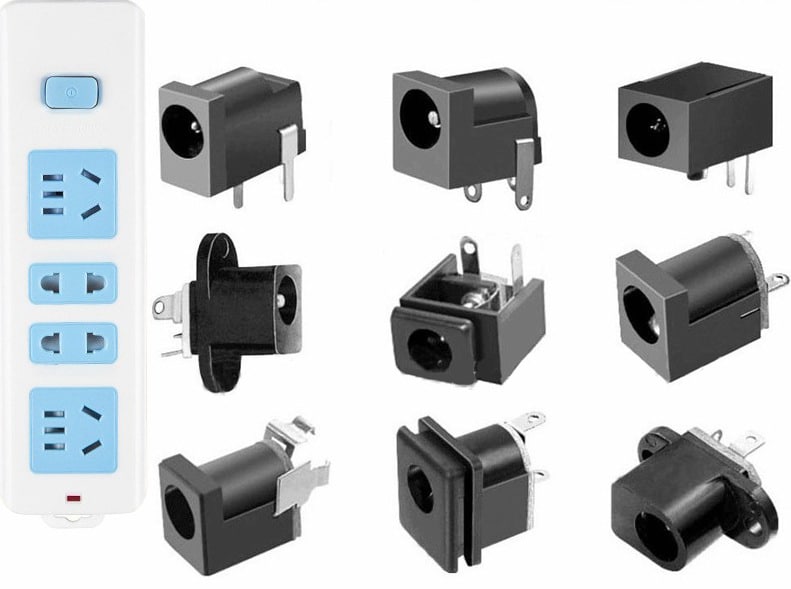
Polarity: The Critical Detail
Because the DC power jack has a fixed positive (+) and negative (-) voltage, the polarity of the connection is crucial. Plugging in a power supply with the wrong polarity can instantly damage or destroy a device.
There are two conventions:
- Center Positive (Most Common): The center pin/inner sleeve carries the positive voltage (+), and the outer barrel carries the negative or ground voltage (-).
- Center Negative (Less Common, but notable): The center pin/inner sleeve is negative (-), and the outer barrel is positive (+). This is frequently found in musical equipment like guitar pedals and some older electronic devices.
A standardized symbol is almost always printed on the device near the jack to indicate the required polarity. Always double-check this symbol before plugging in a power supply.
The Sizing Nightmare: Why Doesn’t My Plug Fit?
This is the single biggest pain point with DC barrel connectors. Unlike USB, which has clearly defined standards, barrel connectors come in a bewildering array of sizes that often look identical to the naked eye.
Sizes are defined by two key measurements, usually given in millimeters:
- Outer Diameter (OD): The diameter of the outside of the male plug’s barrel.
- Inner Diameter (ID): The diameter of the inner hole of the male plug, which corresponds to the diameter of the pin in the female jack.
The “Big Two” Most Common Sizes:
- 5.5mm (OD) x 2.1mm (ID): Arguably the most common size. Used widely for routers, Arduino boards, CCTV cameras, and many 5V/12V consumer electronics.
- 5.5mm (OD) x 2.5mm (ID): Looks almost identical to the 2.1mm version but is often used for devices requiring slightly higher current.
The Problem: You cannot easily tell a 2.1mm pin from a 2.5mm pin by sight. A 2.5mm plug will not fit into a 2.1mm jack. A 2.1mm plug will fit into a 2.5mm jack, but it will be loose, leading to a weak, intermittent, or completely failed connection.
Other Common Sizes Include:
- 3.5mm (OD) x 1.35mm (ID)
- 4.0mm (OD) x 1.7mm (ID)
- 6.3mm (OD) x 3.0mm (ID)
…and many, many more, including proprietary sizes used by specific manufacturers.
Mounting and Variations
DC jacks are available in different physical formats to suit various engineering needs:
- Panel Mount: Designed to be mounted through a hole in a device’s enclosure. They often have threads and a nut to secure them firmly, making them ideal for robust applications and DIY project boxes. They usually have solder tabs for wiring.
- PCB Mount – Through-Hole (THT): These have pins designed to go through holes in a printed circuit board and be soldered. They provide excellent mechanical strength, helping to resist the physical stress of repeated plugging and unplugging.
- PCB Mount – Surface Mount (SMD/SMT): Designed for modern, automated manufacturing, these sit on the surface of the PCB. They take up less space but often require additional anchor points to match the mechanical strength of THT versions.
- Locking Connectors: For critical applications where vibration or accidental pulling could disconnect power, some barrel connectors feature a threaded sleeve on the plug that screws onto a threaded jack, ensuring a secure, locked connection.
Advantages and Disadvantages
Why are these connectors still used when USB-C can deliver power?
Advantages:
- Low Cost: They are incredibly cheap to manufacture—often just pennies per unit—which is vital for cost-sensitive products.
- High Current Capability: Barrel jacks can easily handle 5 amps or more without needing complex electronics, whereas standard USB ports were traditionally limited to much lower currents.
- Robustness and Simplicity: The design is mechanically simple and durable. There are no tiny, delicate pins like in USB ports, and no complex power negotiation protocols are required.
- Secure Fit: A good quality barrel connection is snug and less likely to be accidentally pulled out than some early USB types.
Disadvantages:
- Size Confusion: The lack of a single standard size is the biggest drawback.
- Polarity Risk: Reversing the polarity is easy to do and can be catastrophic.
- No Data Transfer: They are strictly for power; a separate connector is needed for data.
- Size: They are bulkier than modern micro-USB or USB-C connectors.
Conclusion
The DC barrel jack connector is a testament to simple, effective engineering. It delivers power reliably and cheaply. While the world is moving towards the smarter, more versatile USB-C standard for many consumer electronics, the barrel jack will likely remain the go-to solution for countless industrial, hobbyist, and low-cost applications for years to come.
It may be a “dumb” connector, but it’s the powerhouse that has reliably kept our electronic world running for decades. Just make sure you check the size and the polarity!

